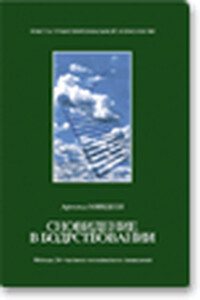Manstead, A. S. R., Wagner, H. L. & MacDonald, C.J. (1986). Deceptive and non-deceptive communications: sending experience, modality, and individual abilities. Journal of Nonverbal Behavior, 10, 141–161.
Manzanero, A. L. & Diges, M. (1996). Effects of preparation on internal and external memories. In G. Davies, S. Lloyd-Bostock, M.
McMurran & C. Wilson (Eds), Psychology, law, and criminal justice: international developments in research and practice. Berlin: Walter de Gruyter, 56–63.
Markham, R. (1991). Development of reality monitoring for performed and imagined actions. Perceptual and Motor Skills, 12,1341–1354.
Maxwell, G. M., Cook, M. W & Burr, R. (1985). The encoding and decoding of liking from behavioral cues in both auditory and visual channels.Journal of Nonverbal Behavior, 9,239–264.
Mehrabian, A. (1912). Nonverbal communication. Chicago, IL: Aldine-Atherton. Meitai Fan, R.,
Wagner, H. L. & Manstead, A. S. R. (1995). Anchoring, familiarity, and confidence in the detection of deception. Baste and Applied Social Psychology, 11,83–96.
Memon, A. (1998). Telling it all: the Cognitive Interview. In A. Memon, A. Vrij & R. Bull, Psychology and law: truthfulness, accuracy and credibility. Maidenhead: McGraw-Hill, 110–188.
Memon, A. &-Bull, R. (1999). Handbook of the psychology of interviewing. Chichester: John Wiley.
Merckelbach, H. L. G. J. (1990). Leugendetector kan gevaarlijk zijn. Intermediair, 26,35–31.
Metts, S. (1989). An exploratory investigation of deception in close relationships. Journal of Social and Personal Relationships, 6,159–119.
Millar, M. G. & Millar, K. (1995). Detection of deception in familiar and unfamiliar persons: the effects of information restriction. Journal of Nonverbal Behavior, 19, 69–84.
Millar, M. G. & Millar, K. (1991). Effects of situational variables on judgments about deception and detection accuracy. Basic and Applied Social Psychology, 19, 401410.
Miller, G. R., Bauchner, J. E., Hocking, J. E„Fontes, N. E., Kaminski, E. P. & Brandt, D. R. (1981)."…and nothing but the truth". In B. D. Sales (Ed.), Perspectives in laze and psychology. Vol. II: The trial process. New York: Plenum, 145–119.
Miller, G. R., deTurck, M. A. & Kalbfleisch, P.J. (1983). Self-monitoring, rehearsal, and deceptive communication. Human Communication Research, 10, 91-111.
Miller, G. R., Mongeau, P. A. & Sleight, С. (1986). Fudging with friends and lying to lovers: deceptive communication in personal relationships. Journal of Social and Personal Relationships, 3, 495–512.
Milne, R. & Bull, R. (1999). Investigative interviewing: psychology and practice. Chichester: John Wiley.
Mitchell, R. W. (1986). A framework for discussing deception. In R. W. Mitchell & N. S. Mogdil (Eds), Deception: perspectives on human and nonhuman deceit. Albany: State University of New York Press, 3–4.
Moston, S. (1981). The suggestibility of children in interview studies. Child Language, 1,61–18.
Mulder, M. & Vrij, A. (1996). Explaining conversation rules to children: an intervention study to facilitate children's accurate responses. Child Abuse and Neglect, 20, 623–631.
Myers. B. & Arbuthnot, J. (1991). Polygraph testimony and juror judgments: a comparison of the guilty knowledge test and the control question test.Journal of Applied Social Psychology, 21, 1421–1431.
Neisser, U. (1981). John Dean's memory: a case study. Cognition, 9, 1-22.
Nigra, G. N„Buckley, M. A., Hill, D. E. & Nelson, J. (1989). When juries «hear» children testify: the effects of eyewitness age and speech style on juror's perceptions of testimony. In S.J. Ceci, D. E. Ross & M. P. Toglia (Eds), Perspectives on children's testimony. New York: Springer-Verlag, 51–10.
Ofshe, R. (1989). Coerced confessions: the logic of seemingly irrational action.Cultic Studies Journal, 6, 1-15.
O'Hair, H. D., Cody, M. & McLaughlin, M. L. (1981). Prepared lies, spontaneous lies, Machiavellianism and nonverbal communication.Human Communication Research, 1, 325–339.
Olsen, D. E., Harris, J. C, Capps, M. H. & Ansley N. (1991). Computerized polygraph scoring system.

